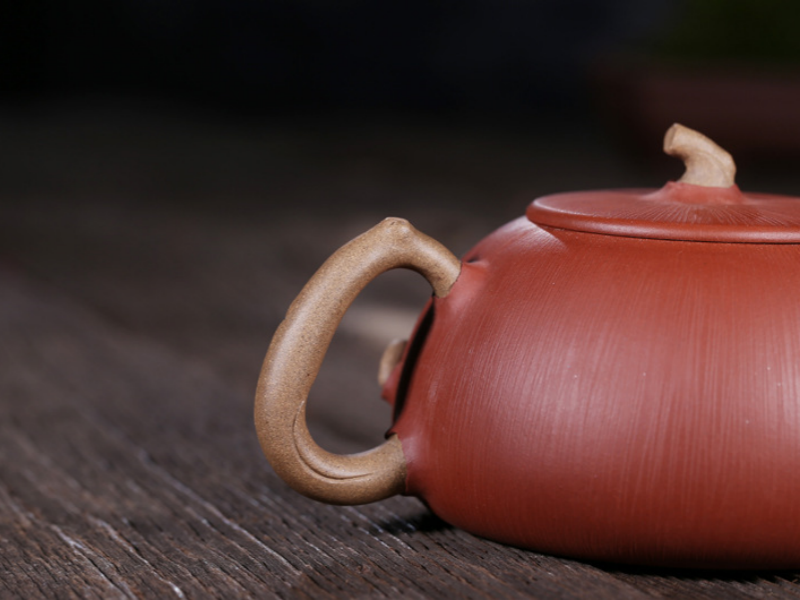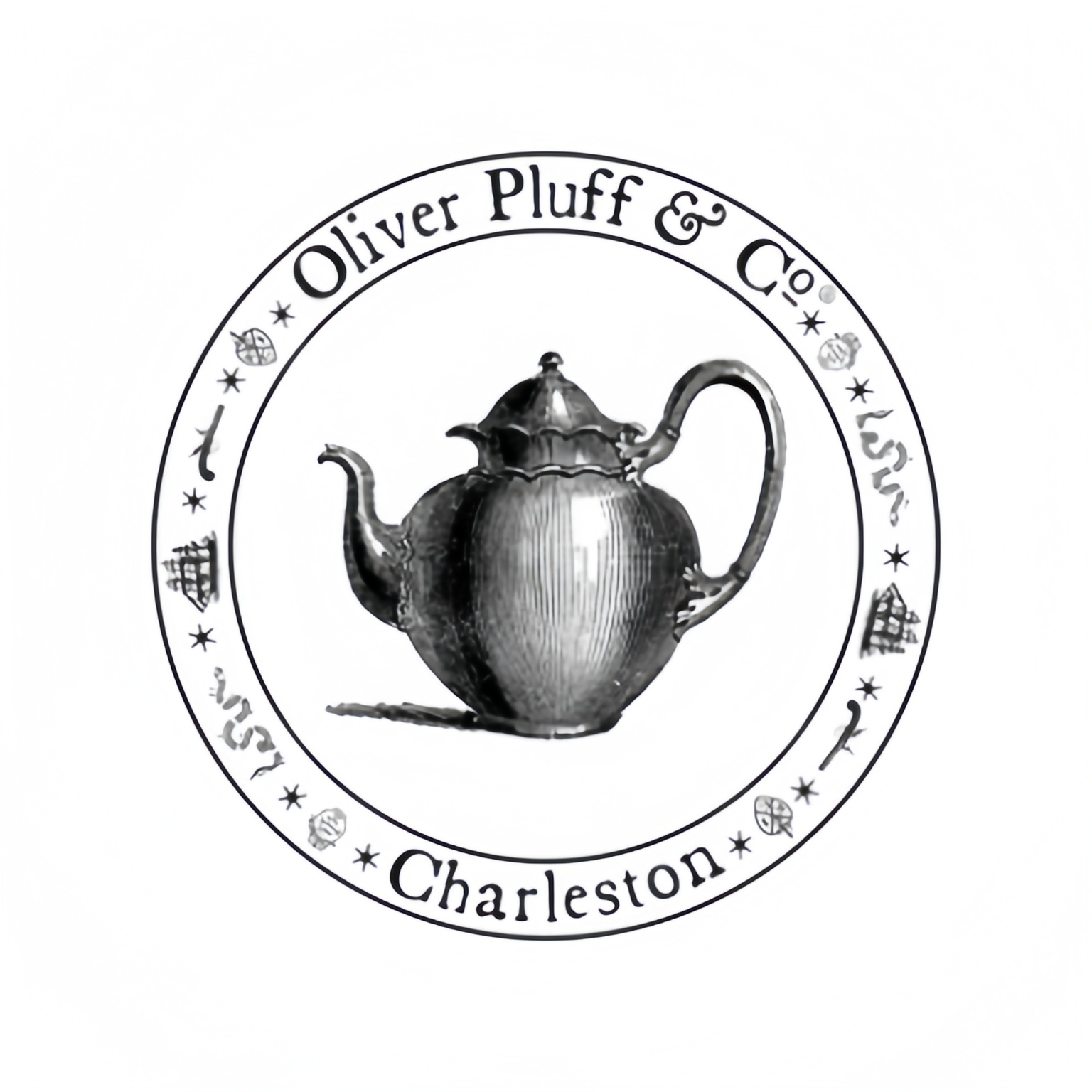Yixing Purple Clay Teapot Golden Gourd, Calabash – Genuine Traditional Chinese Tea Ware
The Art of Chinese Tea Culture
Among these teapots, the Yixing purple clay teapot’s most representative form is called the Golden Gourd Calabash. The history of tea culture in China goes back thousands of years. Yixing purple clay teapots are one of the greatest representations of that rich Chinese tea history. They’re not merely objects but cultural pieces filled with the philosophy, beauty, and tradition of Chinese tea ceremony. The Chinese have long associated the gourd with good fortune; therefore, a teapot in the shape of a gourd conveys auspiciousness and longevity. The Yixing purple clay teapot is not simply a tableware for preparing and drinking tea for the Chinese, but also a cultural token filled with philosophy and sentiment.
Application Scenarios Expansion
Which Industries Are Applicable To?
Traditional Tea Inns and Tea Ceremonies Commercial tea inns throughout Asia and the World employ genuine Yixing teapots within their service and ceremonial presentations. Golden Gourd Calabash teapot offers natural insulating and flavor enhancing properties that become ideal implements and topics of discussion in serious tea ceremonial rituals and presentations.
Luxury Hospitality Premium hotels, resorts and restaurants dedicated to authentic Asian experience incorporate traditional tea service with authentic Yixing wares. The unique form of the Golden Gourd Calabash teapot delivers memorable experiences to their guests that appreciate cultural authenticity.
Collector’s Market The unique craftsmanship of Yixing purple clay teapots has made them a beloved collector’s item around the globe. The Golden Gourd Calabash design, with its artistic value and symbolism, is often a treasured collectible, seeing value increase over time as a cultural investment as well as an heirloom piece.
Home Tea Enthusiasts For frequent and serious tea drinkers, a true yixing teapot renders your daily brewing from a mere habit into a mindful ritual. The Golden Gourd Calabash style adds both practicality and aesthetic pleasure to your home tea practice.

Solve a Problem with Common Usages?
Flavor Loss In comparison to metal or ceramics that can contribute undesired flavor to more subtle teas, the nature of the (Yixing) material being naturally porous allows the tea’s flavor to be accentuated through repeated usage The purple clay from which Yixing ware is made teat, yet the high heat storage properties and the special porosity and permeability of the fine clay means that the teapot actually takes on and accentuates the tea’s own flavor with continued usage, effectively meaning that the te
Inconsistent Brewing Temperature The superior thermal characteristics of Yixing clay ensure that heat remains consistent throughout the brewing process, eliminating the common problem of temperature variation that often leads to bitter or watery tea. The large body of the Golden Gourd Calabash retains heat best for superior extraction.
Cultural Disconnection With the relentless pace of our world, many of us hunger for rich connections to traditions and mindful practices. The act of brewing with a genuine Yixing teapot, for example, creates an intentional moment for introspection and sensory appreciation. The experience aligns with the modern pursuit for cultural authenticity and mindfulness.
Poor Pour Control The carefully designed spout of the Golden Gourd Calabash teapot allows for a steady, smooth, dripless pour, preventing the unnecessary spills that are a common consequence of inferior teapot construction and also enhancing the experience of properly serving tea.
FAQ
Proper seasoning is a must to help build the character of your teapot. First rinse the new teapot thoroughly with boiling water (do not use any soap or detergent). Secondly make up a brew of the tea type you plan to use exclusively with this pot, making it a stronger infusion than normal. Fill the teapot completely with the prepared tea and let it stand for several hours, or better still, overnight. Discard, and rinse with clean water, and allow to air-dry completely.
During the first couple of weeks, try to use your teapot as often as you can with the same kind of tea in order to build up the patina and a flavour profile. For the duration of a pot’s life, many tea masters advocate conscious dedication of each Yixing to only one variety of tea in order to develop complexity of flavour depth (eg. 1 black and 1 pu-erh pot, or 1 ripe pu-erh pot and 1 sheng pu-erh pot etc).
The Yixing purple clay (Zisha) deposits in Jiangsu Province have a special mineral composition that is not found anywhere else in the world. Yixing clay has three special properties that make it exceptionally suitable for brewing tea:
1. Microporosity – The porosity of Yixing clay gives it an unusual absorbency. Over time, the pot absorbs the delicate flavor, aroma and color of the tea it brews. A pot that is brewed over a long period of time can eventually brew tea with only hot water as its porous surface accumulates the flavors and tea oils of brews past.
2. Heat retention – Yixing clay has good heat-retention properties that allow the pots coddle its brewing contents evenly, resulting in a brew that
3. Additionally, the clay itself is free of any toxic components and doesn’t produce hazardous items when exposed to high temperatures, which enables it to be safely used on a daily basis.
To maintain your teapot’s integrity:
• Never use soap, detergents, or abrasive cleaners • After each use, simply rinse with hot water and allow to air dry completely • Periodically wipe the exterior with a soft cloth to maintain its luster • Store without the lid on to prevent moisture buildup and potential mold • Handle the spout and handle with care to prevent breakage • If tea deposits build up inside, simply brew a slightly stronger batch of your usual tea to dissolve residue
With proper care, your Yixing teapot will develop an increasingly beautiful patina and improved brewing characteristics over decades.
A well-made Yixing purple clay teapot is something that can easily last more than a lifetime. Unlike most ceramic wares, Yixing teapots only become more precious with usage and good maintenance — there are teapots several hundred years old in museums and private collections that are still in perfect working condition. Many Yixing teapots become heirloom pieces, passed down and used from one generation to the next, becoming better with every successive generation of ownership. Purple clay, if taken care of properly, can last a very, very long time, and there is no reason to doubt that the Golden Gourd Calabash teapot you purchase today cannot serve 50+ years of regular usage.
Although technically you can brew any tea you want with your Golden Gourd Calabash teapot, in Yixing clay teapot tradition, as well as for a best brew, it is best to commit each Yixing teapot to only one category of tea. This design is particularly suited to brew these types of tea:
• Oolong teas (particularily dark oolongs from Wuyi or aged oolongs) • Aged Pu-erh teas • Black teas (Hong Cha)
The shape and volume (Yixing teapots of this design range from 150ml to 200ml) of the Golden Gourd Calabash makes it less well suited for green teas or white teas which, in Chinese tea tradition, require a different style and size vessel to bring the most out of those teas. Also, since clay is porous it will absorb some characteristics from the tea being brewed so switching sharply between tea families will in consequence blur the sharpness of the flavour the teapot develops over time.
The design of Golden Gourd Calabash is imbued with much cultural significance in the Chinese tradition. The gourd motif, hulu in Chinese, is a symbol of good fortune, health and longevity, as gourds were once used to contain medicine and elixirs. The double-gourd features in Taoist visual vocabularies as a symbol of heaven-and-earth in unison, and this particular decoration is particularly auspicious.
The aesthetic beauty of the teapot shape meets a practical functionality. The curve allows the tea leaves to move around in the brewing process; the weight distribution allows for an elegant and controlled pour. The combination of the narrow waist and expanded chambers provides the ideal space for the tea leaves to unfurl fully and release their full, complex flavours and aroma.
1.Sound test — When tapping the lid against the body, genuine purple clay gives off a distinct and robust high ring, reminiscent of the chiming a piece of fine porcelain would make if struck.
2.Appearance — authentic yixing clay has a natural looking sheen as opposed to a high shine. In Yixing teapots, you’ll see minor, naturally uneven colour changes throughout.
3.Texture — authentic yixing teapots should feel slightly sandy and/or textured to the touch, rather than perfectly smooth.
4.Weight — Genuine Yixing teapots will feel much heavier than they look, as purple clay is quite dense.
5.Craftsmanship — look for the seal of the artist embedded/stamped to the base of the pot, clean joins, well-finished details.
6.Price — good Yixing teapots are made from good material and are a result of excellent craftsmanship. If it’s too cheap, it’s generally due to them being a fake.
If possible, buy from trusted dealers who supply authenticity documentation and details about the creator of the teapot.
Here’s a guideline for brewing a good cup of tea:
1.Preparation: pour hot water into and over your teapot to warm it up. Shake off excess water.
2.Good tea to water ratio: 1 gram of tea to 15ml of water. Your teapot should be just about half-full with tea. Most Golden Gourd teapots have the ideal size for preparing Wuyi Oolong, at a size of around 100 to 180ml. For this typical design, about 8-12g tea should be good.
3.Water temperature: for suitable black teas and oolongs for this pot, 90-95°C (195-205°F).
4.First rinse: Pour water over the leaves. Immediately discard this first “rinse” infusion. The purpose is to “wake up” the dried tea leaves.
5.Brewing time: after the first rinse, wait 45 seconds for the next infusion. Increase the steeping time for every next infusion.
6.Pouring technique: while pouring with your pot, you should hold the lid with one finger, to make sure it will come off.
Golden Gourd Calabash design is especially adept at the gradual unlocking of rich layered flavor through multiple infusions, usually expressing 8-12 distinct brewing experiences from a single serving of leaves.

Selection/Comparison Advice
Comparing Teapot Materials for Tea Brewing
| Material |
Heat Retention |
Flavor Neutrality |
Porosity |
Durability |
Cultural Value |
Maintenance Required |
| Yixing Purple Clay (Zisha) |
Excellent |
Enhances over time |
High |
Very High |
Exceptional |
Moderate |
| Porcelain |
Good |
High |
None |
Moderate |
Moderate |
Low |
| Glass |
Poor |
Perfect |
None |
Low |
Low |
Low |
| Ceramic |
Good |
Good |
Low |
Moderate |
Varies |
Low |
| Cast Iron |
Excellent |
Can affect flavor |
None |
Very High |
Moderate |
High |
| Silver |
Excellent |
Can affect flavor |
None |
High |
High |
High |
Data source: Based on International Tea Committee (ITC) standards and Protected Geographical Indication specifications for Yixing products. https://ec.europa.eu/info/food-farming-fisheries/food-safety-and-quality/certification/quality-labels/geographical-indications-register/
Comparing Yixing Clay Types
| Clay Type |
Color |
Porosity |
Heat Retention |
Best Tea Pairings |
Relative Value |
| Zisha (Purple Clay) |
Purple-brown |
High |
Excellent |
Oolong, Aged Pu-erh |
High |
| Hongni (Red Clay) |
Reddish-orange |
Medium |
Very Good |
Black tea, Dark oolong |
Medium-High |
| Duanni (Yellow Clay) |
Yellow-beige |
Medium-Low |
Good |
Green tea, Light oolong |
Medium |
| Luni (Green Clay) |
Greenish-gray |
Medium |
Good |
Green tea, White tea |
High (Rare) |
| Zini (Black Clay) |
Dark purple-black |
Very High |
Exceptional |
Aged Pu-erh, Strong black |
Very High |
Data source: Yixing Purple Clay Research Institute standards and China National GB/T 29374-2012 standard for purple clay products. http://www.chinaqualitycertification.com/articles/clay-teapot-standards.html
Comparing Teapot Designs for Functionality
| Design |
Volume |
Leaf Expansion Space |
Pour Control |
Heat Distribution |
Best For |
| Golden Gourd Calabash |
150-200ml |
Excellent |
Very Good |
Excellent |
Oolong, Pu-erh |
| Xi Shi (Flat Round) |
100-250ml |
Good |
Excellent |
Very Good |
Versatile, All tea types |
| Shi Piao (Stone Dipper) |
120-180ml |
Moderate |
Good |
Good |
Black tea, Dark oolong |
| Fang Gu (Square Ancient) |
150-250ml |
Very Good |
Moderate |
Good |
Pu-erh, Strong black |
| Long Dan (Dragon Egg) |
80-120ml |
Limited |
Excellent |
Very Good |
Green tea, Light oolong |
Data source: Traditional Chinese Teaware Classification Standards (TCT-2018) and International Tea Masters Association guidelines. https://www.teamastersassociation.org/teaware-standards/
Real Stories/ Customer Testimonials
The Tea Master’s Pick
Master Zhang, a third-generation tea master from Fujian Province, has been brewing his aged Wuyi Rock oolongs with nothing but this Golden Gourd Calabash Yixing teapot for over 25 years. “When my teacher first gave me this teapot, it was simply a beautiful but ordinary vessel,” he says. “Now, after being used thousands of times, it has a life of its own.” Decades of use have darkened the original surface of the teapot considerably, Master Zhang notes, deepening its patina and polishing it to a wonderful smoothness. “The most amazing change is in how it brews the tea. Tea brewed with the exact same leaves in this pot is dramatically different from tea brewed in any other pot—deeper, more complex, with more sweetness and a smoothness that’s impossible to experience in any other way.” He especially appreciates how the teapot’s Golden Gourd Calabash shape allows for perfect unfolding of the leaves at the bottom of the pot, while its narrow waist creates the perfect circulation of water. For the regular tea demonstrations he gives throughout Asia, the teapot has always remained his most cherished brewing companion.
The Collector’s Investment
When Elizabeth Chen, a leading teaware collector based in Singapore, purchased her first Yixing Golden Gourd Calabash teapot fifteen years ago from a renowned artisan, it was worth nearly $300. “That same teapot, seasoned and with a clear provenance, was recently appraised for over $2,500,” she explains. “More than the financial appreciation, which certainly isn’t guaranteed for all pieces, the cultural and aesthetic appreciation has enriched my life in countless ways. Now owning a total of 7 Yixing teapots dedicated to different tea varietals, including a second Golden Gourd Calabash, Chen’s original teapot has remained her habitual one for aged oolongs. “The wonder of this teapot is in how it seems to ‘remember’ the tea. Exclusively used with Da Hong Pao oolong for years, even a brew of plain hot water from the empty teapot radiates subtle aromatics that belong to the tea—the clay essentially has become one with that which it contains.” Her advice for budding collectors is to treat any quality Yixing purchase as a generational investment rather than a mere utensil. “I’ve already put in my will which of my family members get which teapots; that’s how much they mean to me.”
The Professional Tea Shop Experience
Mei Lin, owner of Vancouver based “Tranquil Leaf” tea house, uses authentic Yixing teapots (including a number of Golden Gourd Calabash pieces) in her high end tea service. “Customers usually notice straight away the difference in teas served in our purple clay pots versus regular teaware. The tasting experience is multisensory — the weight of the pot, the subtle earth clay smell of the material, the pour that’s somehow just right, and of course the taste itself with its added flavour complexity.” Lin claims that after introducing authentic Yixing service options three years ago she saw a 35% increase in bookings for her high end tea services. “Our Golden Gourd Calabash pots are especially popular at our aged oolong and Pu-erh tastings. We’ve started hosting monthly teaware appreciation workshops where people can come and taste the difference for themselves.” Each one of her Yixing teapots is assigned to a particular tea family, and labelled accordingly. Staff are well versed on the correct handling and care taking procedures. “They’re more than just tools, they belong to the tea house now. Many of our regulars have become attached to particular pots, and ask after their favourite ones when they visit.”

The Tea Ceremony Master
Hiroshi Tanaka, a Japanese tea ceremony teacher who has incorporated Chinese gongfu cha practices into his own life, calls his Golden Gourd Calabash Yixing teapot: ‘the perfect bridge between traditions.’ Over the course of more than thirty years studying tea ceremonies around Asia, Tanaka has come to appreciate the way this particular design respectfully pays homage to ancient traditions while functioning perfectly in contemporary life. “What makes this design so marvelous is its design for ergonomic perfection—the balance between pour, the natural way it sits in your hand, the control of the flow from the spout,” Tanaka says. “These aren’t accidental or coincidental qualities, but things that have been refined over centuries.” At his tea ceremony school in Kyoto, Tanaka uses his collection of Yixing teapots, and especially his treasured Golden Gourd Calabash, to demonstrate how good teaware encourages meditative awareness in brewing. “My students often come to practicing with gongfu cha very focused on the techniques of preparation,” he says. “But eventually, they come to learn that the vessel is itself a teacher. The purple clay responds to your touch, to your care, to your intention—and that’s really a living quality of this material like no other in the world of tea.”
Conclusion
This bona-fide Yixing Purple Clay Teapot in the form of Golden Gourd Calabash is not simply a vessel for brewing tea; it is a conduit for a cultural appreciation of hundreds of years of tea drinking tradition. In time, with care and the application of its sole use, it will gain overall more and more pleasing brewing characteristics as well as possible market value. Brewing becomes an exercise not only concerned with making tea but a way to practice being in the moment, in tune with tradition, craft, artisanship and the meditative quality of the Chinese tea ceremony. Whether you are a competent tea master, collector or simply a person who wishes to access the deeper potentialities of tea culture this unique teapot will supply practical functionality as well as cultural value that few other objects can afford.























Shaniqua Alexander –
Adorable size and the craftsmanship is incredible. Who knew my green tea could taste so good.
Vincent Sanders –
The work of this Yixing purple clay teapot is very good, it is really a masterpiece.
Felicia Bell –
This is my favorite teapot now, it brews tea so smoothly
Samira Hussein –
I love how the golden finish catches the light wonderful when I use it.
Benjamin Gray –
Using this teapot has enhanced my enjoyment of teatime, making it a more special part of my daily routine.
Angela Rogers –
The gourd shape brings a pleasant natural aesthetic to my domestic tea ceremonies.